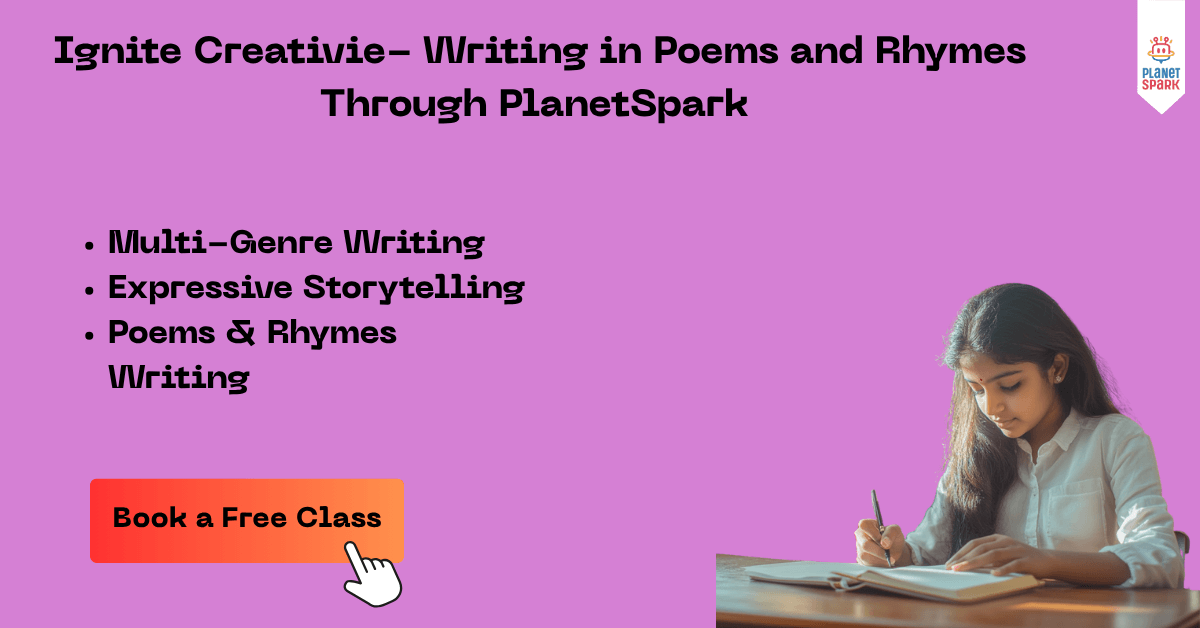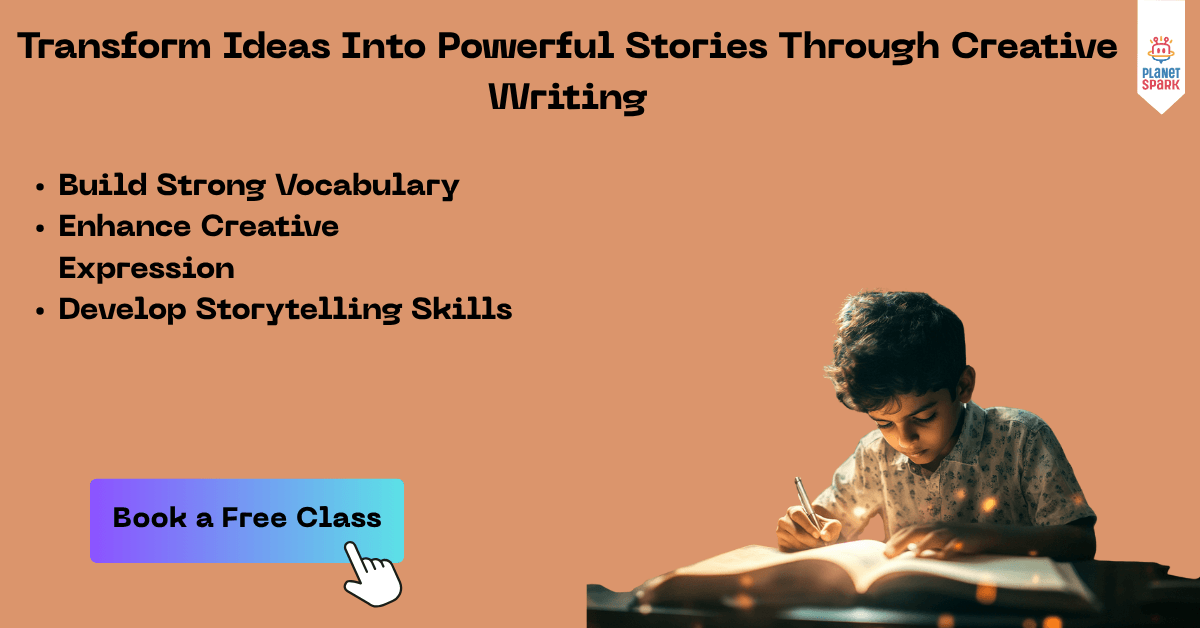How to Write a Biography: Step-by-Step Writing Guide

Table of Contents
- Understanding the Meaning and Purpose of a Biography
- Research: The Foundation of Every Great Biography
- Structuring a Biography: The Backbone of Great Writing
- Adding Emotion and Voice to the Narrative
- Turning Research into a Compelling Life Story
- Editing and Polishing Your Biography
- Adding a Personal Touch: Your Creative Signature
- Examples of Great Biographies and What They Teach Us
- PlanetSpark: Where Creativity Finds Its Voice
- Every Life Has a Story: Be the One Who Writes It
A biography isn’t just a collection of dates and facts; it’s the story of someone’s journey, told with honesty, emotion, and purpose. Whether you’re writing about a famous leader, a teacher, or a family member, learning how to write a biography helps you capture life’s essence on paper.
This blog will guide you through every step, from understanding the meaning of biographies to structuring one effectively, with practical tips and creative insights.
Understanding the Meaning and Purpose of a Biography
Before you begin writing, it’s essential to understand what a biography truly is.
A biography is a detailed written account of a person’s life, their experiences, achievements, and lessons. It’s not just a timeline but a narrative that helps readers understand who that person is beyond their public image.
Meaning of Biographies in Writing
Biographies serve several purposes: they educate, inspire, and preserve memories. Through them, we explore the struggles, dreams, and defining choices that shape a person’s legacy.
Example:
When you read the biography of Dr. A.P.J. Abdul Kalam, you don’t just learn about his scientific work; you experience his humility, resilience, and vision for India. That’s what makes a biography powerful.
In essence, writing a biography means breathing life into facts, turning information into inspiration.

Research: The Foundation of Every Great Biography
Every engaging biography begins long before the first sentence is written. Research is your blueprint; it shapes what you’ll say and how you’ll say it.
Gather Authentic Information
Start with:
Primary sources: interviews, letters, speeches, and journals.
Secondary sources: books, documentaries, and reliable articles.
Cross-check facts before you include them. Authenticity builds credibility, especially if you plan to publish or share your biography professionally.
Understand the Person Behind the Achievements
Go beyond “what they did”, find out “why they did it.” Learn about their values, fears, motivations, and turning points. This depth is what transforms a biography example into an unforgettable story.
Organize Your Research Notes
Group your notes chronologically or thematically. Some writers prefer to arrange by life stages (childhood, career, legacy), while others focus on themes (resilience, innovation, leadership).
Whichever structure you choose, ensure that your storytelling feels logical and emotionally engaging.
Learn Creative Writing with PlanetSpark and master the art of storytelling, structure, and flow.
Limited seats left enroll now, turn your imagination into impactful writing today!
Structuring a Biography: The Backbone of Great Writing
A strong structure helps your biography stay engaging and readable. Think of it as the map guiding readers through the person’s journey.
Start with an Engaging Introduction
Begin your biography with a hook, something that instantly captures interest. You can open with a surprising fact, an emotional moment, or a quote that defines the person’s spirit.
Example:
“When Malala Yousafzai was just 11, she started blogging about education under Taliban rule, unaware that her words would echo across the world.”
This opening sets tone, theme, and context in a single paragraph.
Move Through Life Stages Naturally
Use smooth transitions between life events, childhood, education, key achievements, personal struggles, and legacy. Avoid jumping abruptly between timelines.
Each phase should reveal growth: how the person evolved through challenges and decisions.
Focus on Turning Points
Every great biography includes pivotal moments, those events that shaped who the person became. Highlight these moments vividly with sensory details, emotions, and impact.
Example:
Instead of writing:
“He became a scientist after studying in college.”
Write:
“It was in his college lab, surrounded by broken circuits and dreams, that he realized science wasn’t his subject; it was his calling.”
That’s what transforms a paragraph into an experience.
Adding Emotion and Voice to the Narrative
A well-written biography isn’t just factual, it’s felt. Readers should sense emotion behind the words, almost as if they’re walking beside the subject.
Choose the Right Tone
The tone should match the person’s life story:
Inspirational and respectful for leaders or visionaries.
Warm and nostalgic for personal or family biographies.
Objective and factual for academic or professional works.
A consistent tone keeps your writing cohesive and immersive.
Show, Don’t Tell
Instead of describing achievements plainly, show the human effort behind them. Use imagery, dialogues, and reflections.
Example:
“Her trembling hands gripped the piano keys as the audience waited. That night, she wasn’t just performing, she was rewriting her destiny.”
Such storytelling techniques elevate a biography example from informative to inspiring.
Join PlanetSpark’s Creative Writing Program and learn how to turn real lives into powerful narratives.
Turning Research into a Compelling Life Story
Once your research and structure are in place, the next step is transforming those notes into a beautifully written story. Writing a biography isn’t about retelling facts — it’s about weaving them into a narrative that moves readers emotionally and intellectually.
Writing with Flow and Emotion
A great biography has rhythm. It flows like a story, not a report. The reader should sense the ups and downs, the triumphs and failures, the emotions that shaped the subject’s life.
Here’s how to create that flow:
Start each section with a moment of change, something that signals growth or transformation.
Blend narration with reflection, show what happened and why it mattered.
Avoid monotony by mixing long descriptive passages with short impactful sentences.
Example:
“Each night, she wrote by candlelight, not to be remembered, but to remember herself.”
That single line can define an entire phase of a person’s journey.

Using Dialogue and Anecdotes Effectively
Even in non-fiction writing like biographies, storytelling tools work wonders. Short conversations or personal anecdotes make the writing intimate and relatable.
Example:
Instead of saying, “He was generous,” include an anecdote where he helped a struggling student buy books.
It’s the detail that convinces the reader, not adjectives. Adding small real-life moments can make your biography example unforgettable.
Editing and Polishing Your Biography
Even the most powerful biography can lose its impact if it’s not well-edited. Great writers rewrite, and that’s where true clarity is born.
1. Check for Structure and Consistency
Ensure that every chapter or section connects smoothly to the next. Verify that events appear in logical order, and tone remains consistent throughout.
2. Refine Language and Voice
Simplify complex sentences and remove repetitive phrases. Every word should add meaning. Ask yourself, “Does this line move the story forward?” If not, trim it.
Your writing should sound natural, confident, and emotionally resonant.
3. Get Feedback Before Finalizing
Share your draft with a friend, teacher, or writing mentor. Outside perspectives reveal blind spots and highlight moments that need more emotion or clarity.
Adding a Personal Touch: Your Creative Signature
What makes your biography stand out is you, your interpretation, your style, and your emotional insight. Readers want authenticity, not imitation.
1. Blend Facts with Feelings
Facts give credibility, but feelings give life. Show how events impacted the person emotionally. This connection helps readers relate to the subject as a human being, not just a historical figure.
2. Maintain Objectivity with Empathy
While your writing should be emotionally rich, it must remain fair and balanced. Avoid glorifying or criticizing. Present truth with understanding, that’s the hallmark of a skilled biographer.
Learn the art of creative storytelling with PlanetSpark’s Creative Writing Program and write with impact, empathy, and imagination.
Examples of Great Biographies and What They Teach Us
The best way to learn how to write a biography is by reading outstanding ones. Each has a unique approach that teaches a valuable lesson in storytelling.
1. The Diary of a Young Girl by Anne Frank
Shows the power of honesty and emotion, how vulnerability can create global empathy.
2. Long Walk to Freedom by Nelson Mandela
Demonstrates resilience and structure, each chapter mirrors his transformation from prisoner to president.
3. Steve Jobs by Walter Isaacson
Blends detail and narrative, a model of how interviews and insights can create a multidimensional portrait.
Each biography example reveals that the best stories come from truth told creatively.
PlanetSpark: Where Creativity Finds Its Voice
Writing a biography demands imagination, structure, and empathy, and that’s exactly what PlanetSpark teaches. With expert mentors and fun, interactive sessions, PlanetSpark helps learners express themselves like professionals.
Why Choose PlanetSpark for Creative Writing?
Genre-Focused Curriculum: Covers diverse forms like stories, poems, essays, reviews, and persuasive letters to build versatile writing skills.
Framework-Based Learning: Students master story arcs, the S.T.O.R.Y structure, the 5W1H method, and the PEEL technique for structured writing.
Writing and Speaking Integration: Learners present their written pieces to strengthen expression and storytelling confidence.
Real-Time Editing: Classes emphasize rewriting and refinement through peer reviews and teacher feedback.
Publishing Opportunities: Students can feature their work on PlanetSpark’s blog, e-magazine, or co-authored anthologies for recognition.
Creativity Boosters: Writing prompts, imagination games, and story dice activities nurture originality and creative thinking.
Every Life Has a Story: Be the One Who Writes It
Writing a biography is more than documenting life; it’s about honoring experiences and translating them into stories that inspire others. The secret to learning how to write a biography lies in observation, empathy, and practice.
When you write with honesty, rhythm, and heart, you transform a person’s journey into a legacy. And with the right training, like PlanetSpark’s Creative Writing Program, you can master the skills that make every story unforgettable.
Because every life is a story worth telling, you just have to be the one to write it beautifully.
Join PlanetSpark’s Creative Writing Course and turn your ideas into inspiring words that captivate readers.
Frequently Asked Questions
A biography is a detailed story of someone’s life, written by another person. It goes beyond listing events, it explores emotions, experiences, and lessons learned. The true meaning of biographies lies in capturing the human essence behind facts and timelines.
Start by choosing a person whose life genuinely interests you. Research their journey, achievements, and struggles, and organize the details chronologically. Begin your biography with a strong hook, a moment that defines their life or sparks curiosity in the reader.
A strong biography includes an introduction, background, major life events, challenges, accomplishments, and reflections. The best ones weave these elements into a compelling narrative, blending truth with storytelling to keep readers emotionally connected throughout.
The length of a biography depends on its purpose. Short biographies (500–800 words) summarize key moments, while full-length biographies may exceed 50,000 words. The focus should always be on clarity, relevance, and keeping readers engaged, regardless of word count.
Absolutely! Writing your own biography is a form of self-expression and reflection. Share your story honestly, your struggles, turning points, and growth. Make it authentic, and focus on how your journey might inspire or help others who read it.
Personalized Communication Report
Record a video to get a AI generated personalized communication report for your child

Hi There, want to try these
tips for your child with
LIVE with our expert coach?
Let's check your child's
English fluency
